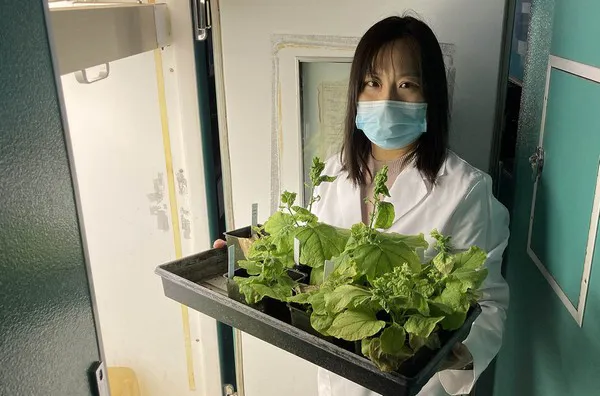New research, led by Washington State University scientists, into how viral proteins interact and can be disabled holds promise to help plants defend themselves against viruses—and ultimately prevent crop losses. The study published in Frontiers in Plant Science found that viral proteins interact with each other to help a virus hijack its host plant and complete its life cycle. When some of these viral proteins were disabled, the researchers found that the virus could not move from cell to cell. These proteins are also doing double duty, inducing disease as well.
“These silencing suppressor proteins are interacting with each other in a seamless, highly coordinated lockstep dance to help the virus in overcoming the host defense,” said WSU virologist Hanu Pappu, the senior author on the paper.
Insights into the dynamics of these interactions could provide clues for blocking them, Pappu added. “We are using genome editing approaches to do exactly that,” he said. “The more we understand about how these viruses bring down defensive ‘shields’ and cause disease, the better chance we have of saving plants from viral invaders.”

A silent, behind-the-scenes arms race between plants and the viruses that prey on them has been going on for millions of years. Viral diseases cost more than a billion dollars in losses annually to food, feed, and fiber crops worldwide, according to the Food and Agriculture Organization (FAO) of the United Nations.
Plants have developed a sophisticated defense system to protect themselves from infection, involving highly choregraphed cellular events that are triggered by viral attack, Pappu said. Plants use a molecular defense called RNA interference, RNAi for short, that chops incoming viral nucleic acid, preventing the virus from commandeering host cells. Viruses in turn evolved, producing molecules called ‘silencing suppressor proteins’ that can disable their hosts’ RNAi defenses.
“Star Trek’s Federation-versus-Klingons is playing out in real life,” said Pappu. “When the plant senses an attack by a virus, its ‘shields’ go up. Viruses are finding ways to lower the shields or slip through them and eventually take over the plant.”
Pappu, the Chuey Endowed Chair and Samuel H. Smith Distinguished Professor in WSU’s Department of Plant Pathology, studies viral proteins that suppress or evade plant defenses, ultimately devising ways to help plants repel pathogens. He and his team have been studying a group of pathogens called geminiviruses—among the most crop-destructive viruses in many parts of the world.
Read the complete research at www.news.wsu.edu.
